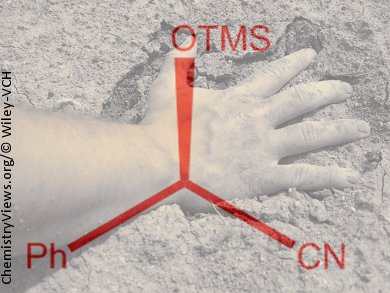Understanding the inherent handedness of nature’s molecules, the amino acids, sugars, and ribonucleic acids, has been a moot point for chemists hoping to understand the prebiotic world. Countless explanations from quantum asymmetry to supernova synchrotrons have been suggested. However, making the leap from racemic chemistry in the so-called primordial soup to the living world we see today requires a molecular understanding.
A team at the University of Tokyo, Japan, has shown that helical poly(amino acid)s can nudge the cyanosilylation of aldehydes towards one enantiomer in preference to another suggesting a possible mechanism for certain aspects of life’s homochirality. Of course, taking a step back from this position requires yet more biased chemistry that would give rise to such asymmetric helices in the first place. Nevertheless, the work also hints at the possibility of creating artificial enzymes for controlling laboratory reactions.
- Asymmetric induction by helical poly(amino acid)s in cyanosilylation of aldehydes,
Kengo Akagawa, Kazuaki Kudo,
Tetrahedron Lett. 2012, 53(45), 5981–5983.
DOI: 10.1016/j.tetlet.2012.07.034




